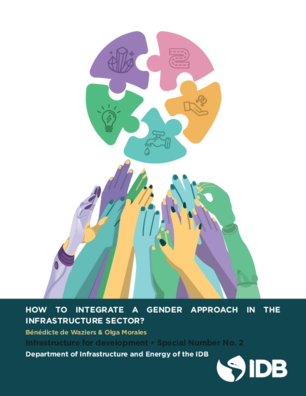How to Integrate a Gender Approach in the Infrastructure Sector?: Infrastructure for Development Special Number No. 2
Date
Jun 2020
Sufficient availability of infrastructure services is a basic pillar of sustainable development: it reduces poverty, spurs economic growth, fosters social inclusion, and improves quality of life. These are compelling arguments for taking a gender perspective when designing infrastructure services, a strategy that increases the social return on those investments. However, infrastructure services provide many benefits, but gender dimensions lag behind when it comes to LAC's infrastructure agenda. This report explores the effects that a gender approach to infrastructure could have on Latin American economies and societies. In order to achieve this, we first explore the relation that exists between infrastructure and needs related to gender, to continue on how this has an impact in womens quality of life. Secondly we describe the current situation and future landscape of the inclusion of a gender approach in five specific sectors: Water and Sanitation; Energy; Extractive industries; Transportation and Social Infrastructure. Finally, we analyze infrastructure projects financed by the IDB under four axis: 1. Equal opportunities in the professional sphere; 2. Institutional strengthening with a gender approach; 3. Creation of equal opportunities for productive development and; 4. Access to infrastructure for gender equality.




